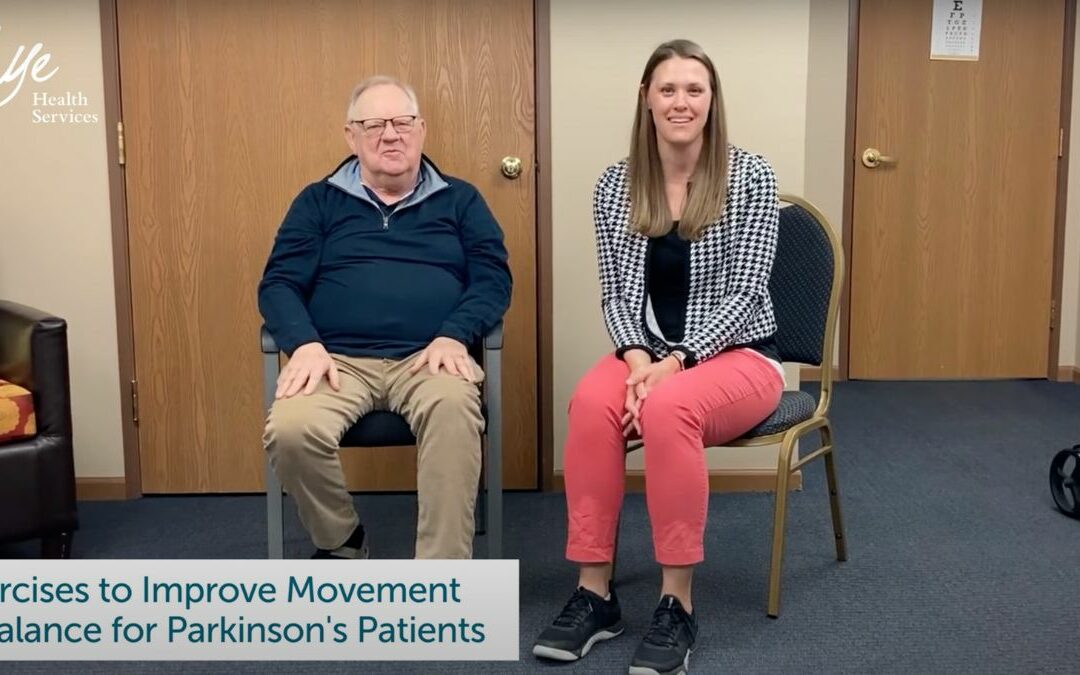In honor of Parkinson’s Awareness Month, Nye Health Services has put together a video highlighting the importance of exercise in managing Parkinson’s symptoms. The video features Lani, a Physical Therapist at Nye Legacy, and Evan, who provide practical exercises that can be done at home to improve movement and balance for individuals with Parkinson’s disease.
Practical Exercises to Improve Movement and Balance for Parkinson’s Patients at Home
Parkinson’s disease is a neurological disorder that affects millions of people worldwide. It is a chronic and progressive condition that can impact movement, balance, and coordination. Parkinson’s Awareness Month is observed every April to raise awareness about the disease, its symptoms, and the importance of early diagnosis and treatment.
Lani is an LSVT BIG certified Physical Therapist who works with individuals with Parkinson’s disease or Parkinson’s-like conditions. She emphasizes the importance of big movements in all of the exercises she demonstrates in the video. This is because people with Parkinson’s tend to get smaller and smaller with their movement patterns and posture, so making big movements is vital in combating this trend.
Exercise 1 – Hands
The first exercise demonstrated in the video is for the hands. It involves balling up the hands and flicking them as many times as possible. This exercise promotes fine motor movement and helps maintain dexterity.
Exercise 2 – Legs and Hips
The next exercise is for the legs and hips. Starting with the right leg, Lani shows how to lift the leg up and over and then back down. This exercise helps with getting in and out of a car and moving the leg when trying to be mobile. Individuals with Parkinson’s tend to have difficulty with mobility, and this exercise can help with that.
Exercise 3 – Arms, Shoulders, and Posture
The third exercise is for the arms, shoulders, and posture. The exercise involves starting with arms together, down and low, then lifting them up and over. Sitting away from the back of the chair can help engage the core, trunk, and postural muscles, which are essential for individuals with Parkinson’s.
Exercise 4 – Quads, Stomach, and Glutes
The final exercise is for functional strengthening. Lani demonstrates how to do sit-to-stands, where the person stands up as big as they can and then slowly sits down. This exercise helps strengthen the quads, tummy, and glute muscles.
It is important to note that these exercises are not a substitute for medical treatment or advice. Still, they can help manage Parkinson’s symptoms and improve daily life. If you have Parkinson’s or know someone with Parkinson’s, Nye Health Services has a great support group that meets on the third Thursday of every month at 1:00 pm at Nye Square.
Improving the Quality of Life for Individuals Living with Parkinson’s Disease
In conclusion, Parkinson’s disease can be a challenging condition to live with, but regular exercise can help manage the symptoms and improve the quality of life. The activities demonstrated in the video offer valuable insights and practical tips to help individuals with Parkinson’s stay active and healthy.
Additional Information: Parkinson’s Exercise Recommendations – Parkinson’s Foundation
Nye Health Services | Award-Winning Senior Living Facilities & Services
Nye Health Services was established in 1989 on the philosophy that older adults deserve services that recognize the individual and are tailored to their unique needs. As a company, we do not aspire to be the largest, instead, we aim to uphold our mission by providing award-winning health services that make our residents feel genuinely cared for and connected while realizing life’s joy.
If you are searching for a senior living community, explore one of our three locations in Fremont (Nye Legacy, Nye Square, & Nye Pointe), Norfolk (The Meadows), and Lincoln, Nebraska (Gateway Vista). Each campus provides award-winning health and wellness services, comfortable apartments and/or suites, with numerous amenities to help you live life to the fullest!

